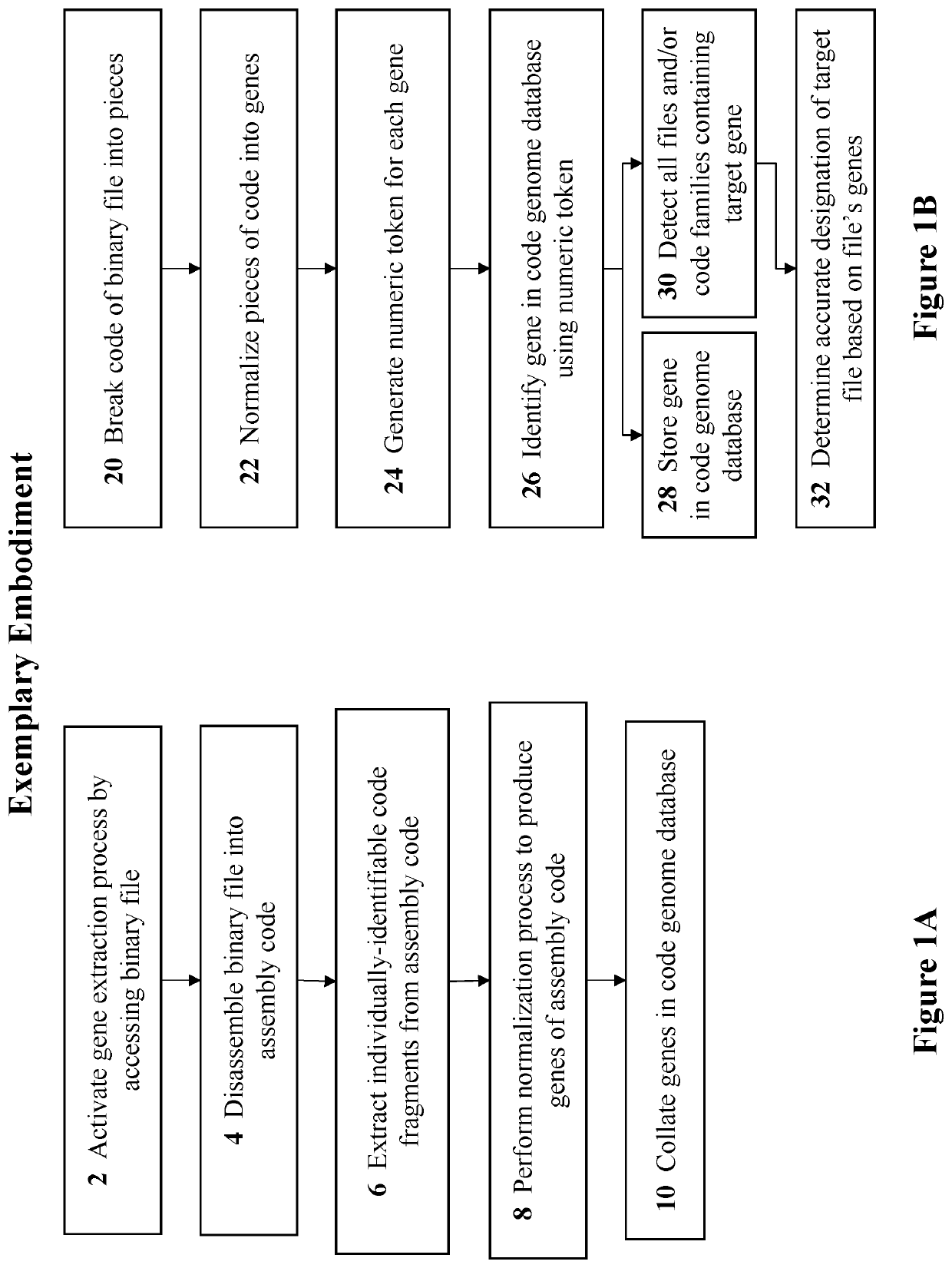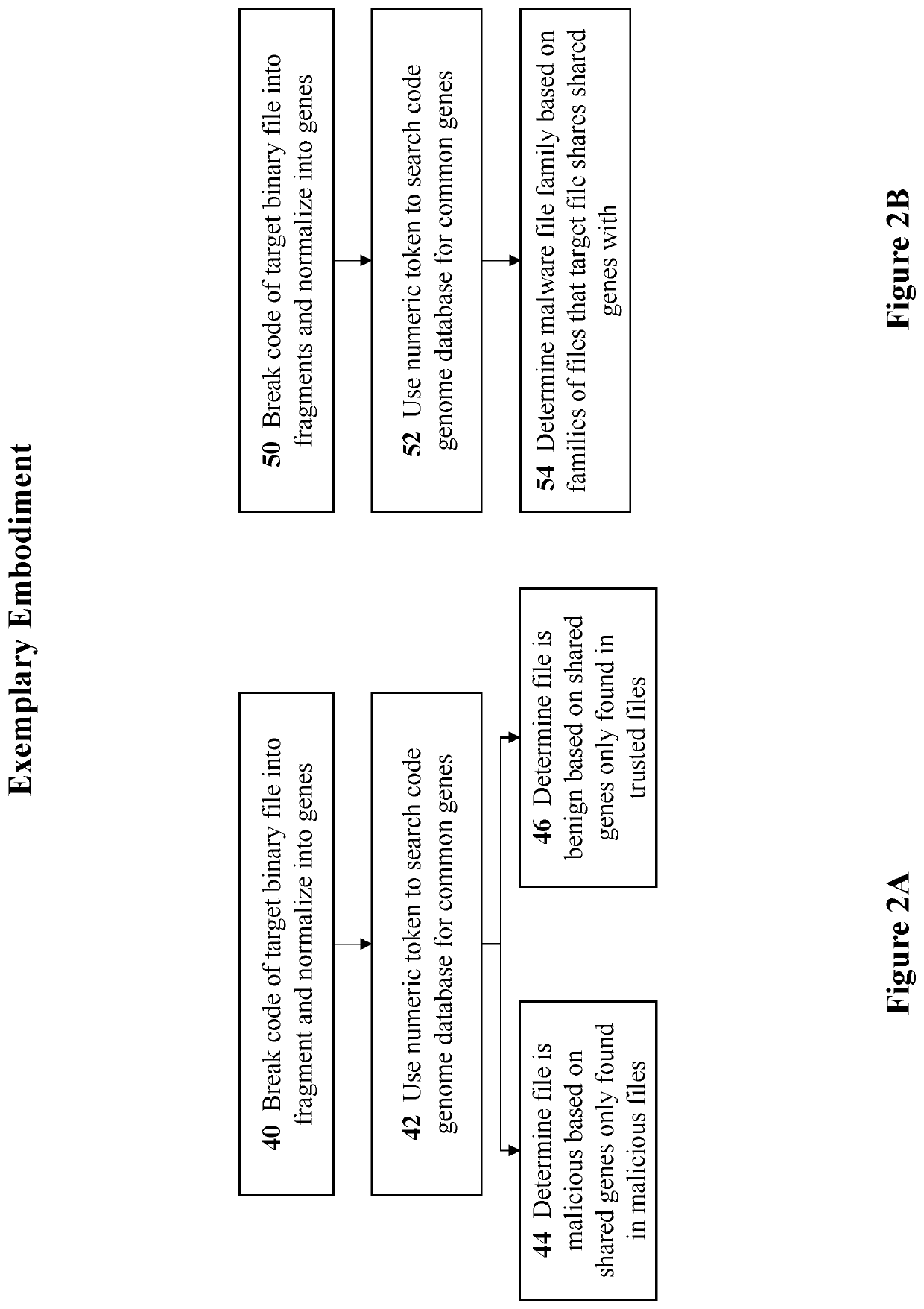Methods and systems for genetic malware analysis and classification using code reuse patterns
a technology of genetic malware and classification methods, applied in the field of genetic malware analysis and classification using code reuse patterns, can solve the problems of no problems, no guarantees, and teams stopping their line of inquiry, so as to achieve the effect of harder cyber-attacks
- Summary
- Abstract
- Description
- Claims
- Application Information
AI Technical Summary
Benefits of technology
Problems solved by technology
Method used
Image
Examples
Embodiment Construction
[0050]The present invention relates to methods and systems for genetic malware analysis and classification using code reuse patterns. The principles and operation for providing such methods and systems, according to the present invention, may be better understood with reference to the accompanying description and the drawings.
[0051]Referring to the drawings, FIG. 1A is a simplified flowchart of the major process steps for the gene extraction process, according to embodiments of the present invention. The process starts with activation of the gene extraction process upon accessing a target binary file (Step 2). The binary file is then disassembled into assembly code (Step 4). Individually identified code fragments are extracted from the assembly code (Step 6). A normalization process is then performed to produce the genes of assembly code (Step 8). The genes are finally collated in a code genome database (Step 10).
[0052]The normalization process is based on rules that can support mul...
PUM
 Login to View More
Login to View More Abstract
Description
Claims
Application Information
 Login to View More
Login to View More - R&D
- Intellectual Property
- Life Sciences
- Materials
- Tech Scout
- Unparalleled Data Quality
- Higher Quality Content
- 60% Fewer Hallucinations
Browse by: Latest US Patents, China's latest patents, Technical Efficacy Thesaurus, Application Domain, Technology Topic, Popular Technical Reports.
© 2025 PatSnap. All rights reserved.Legal|Privacy policy|Modern Slavery Act Transparency Statement|Sitemap|About US| Contact US: help@patsnap.com


